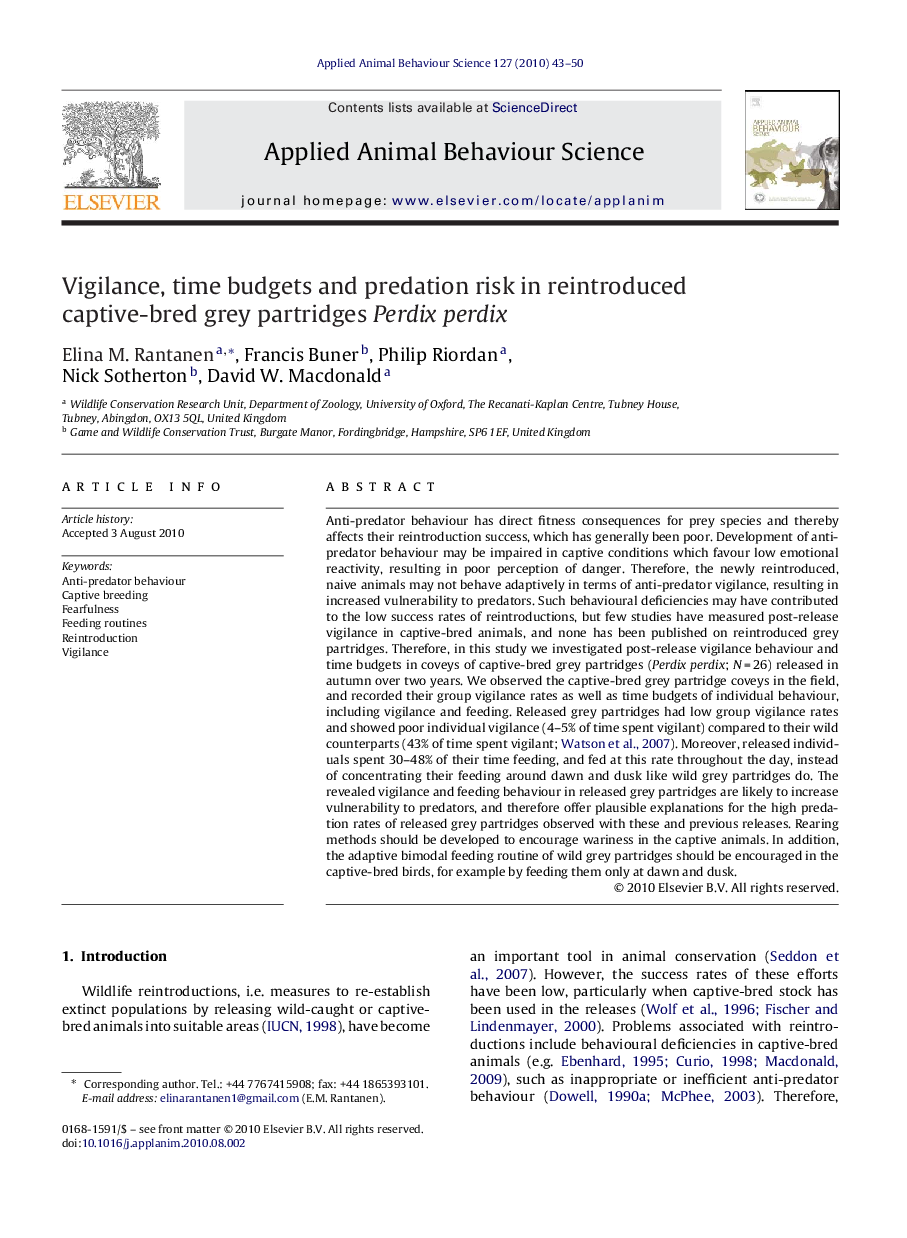| کد مقاله | کد نشریه | سال انتشار | مقاله انگلیسی | نسخه تمام متن |
|---|---|---|---|---|
| 4523386 | 1625395 | 2010 | 8 صفحه PDF | دانلود رایگان |

Anti-predator behaviour has direct fitness consequences for prey species and thereby affects their reintroduction success, which has generally been poor. Development of anti-predator behaviour may be impaired in captive conditions which favour low emotional reactivity, resulting in poor perception of danger. Therefore, the newly reintroduced, naive animals may not behave adaptively in terms of anti-predator vigilance, resulting in increased vulnerability to predators. Such behavioural deficiencies may have contributed to the low success rates of reintroductions, but few studies have measured post-release vigilance in captive-bred animals, and none has been published on reintroduced grey partridges. Therefore, in this study we investigated post-release vigilance behaviour and time budgets in coveys of captive-bred grey partridges (Perdix perdix; N = 26) released in autumn over two years. We observed the captive-bred grey partridge coveys in the field, and recorded their group vigilance rates as well as time budgets of individual behaviour, including vigilance and feeding. Released grey partridges had low group vigilance rates and showed poor individual vigilance (4–5% of time spent vigilant) compared to their wild counterparts (43% of time spent vigilant; Watson et al., 2007). Moreover, released individuals spent 30–48% of their time feeding, and fed at this rate throughout the day, instead of concentrating their feeding around dawn and dusk like wild grey partridges do. The revealed vigilance and feeding behaviour in released grey partridges are likely to increase vulnerability to predators, and therefore offer plausible explanations for the high predation rates of released grey partridges observed with these and previous releases. Rearing methods should be developed to encourage wariness in the captive animals. In addition, the adaptive bimodal feeding routine of wild grey partridges should be encouraged in the captive-bred birds, for example by feeding them only at dawn and dusk.
Journal: Applied Animal Behaviour Science - Volume 127, Issues 1–2, October 2010, Pages 43–50